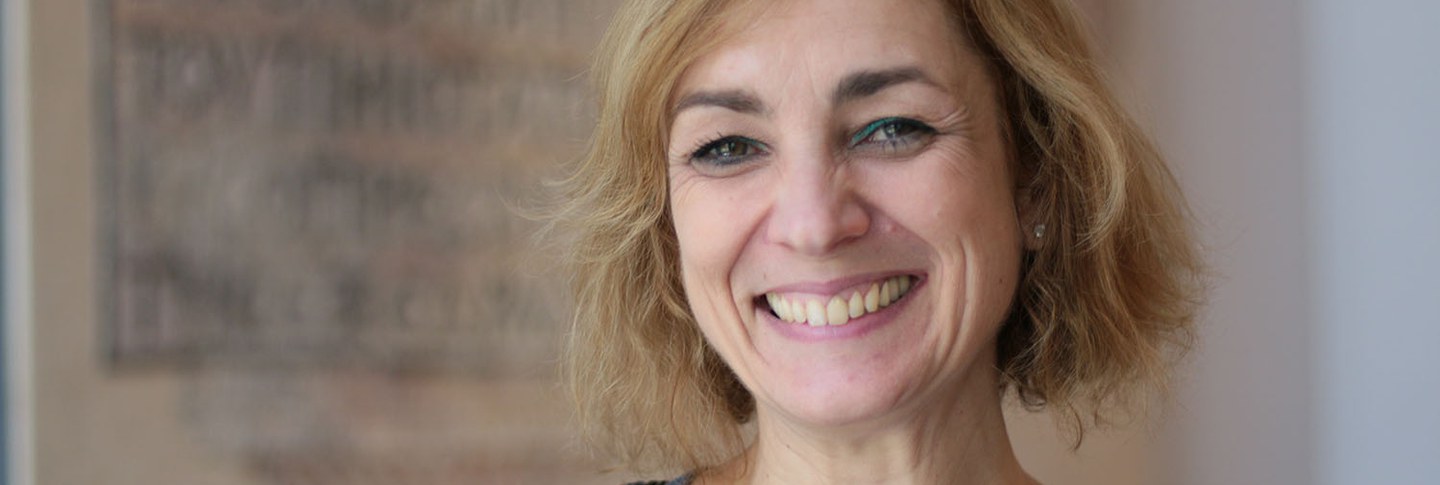Anna Leone, a fellow in Byzantine Studies at Dumbarton Oaks and a reader in the Department of Archaeology at Durham University, studies the now-submerged site of Dibsi Faraj through the lens of a rediscovered archive. The site, a fortified citadel located on the Euphrates, was excavated in the early 1970s by Richard Harper and his team, a project that was heavily funded by Dumbarton Oaks. Recently, an extensive archive of fieldwork was discovered in Harper’s garage. Leone has been working with the archive to reconstitute the project narrative and reevaluate discoveries at the site.
Brief Q&A with Anna Leone
You talked about the mass of boxes that was discovered in this garage. What’s it like to go through those boxes, after all that time has passed?
It was a very interesting experience to go through the life of someone, and to try to find information about their past work. Now I know Richard Harper.
The archive also contained a lot of personal material—letters to his wife, and so forth. I asked Harper’s daughter about it, whether she wanted to keep it, and she said she already had a house full of personal things. She didn’t want to deal with any more. She said, “Keep what you think is interesting and send it to me, and just throw away everything else.” But that was a bit difficult, to decide what his daughter would have liked to keep.
There were other things, too—a small diary that his wife started to write when she joined him at the site. The title was something like, Life of the Wife of an Archaeologist in Syria. I think she might have been influenced by Agatha Christie, who was married to the archaeologist Max Mallowan. A lot of her stories are in fact influenced by archaeology and the life she had following him from site to site. And so I found all these notes about her experience in the middle of nowhere, with nothing, without knowing what she was going to do, or how she was going to manage to live there for three years. It was fascinating.
I was hoping you could talk about the process of, forty years down the line, reconstructing a project narrative from a collection of field notes, finds, and so on.
In terms of the story of the project, it was rather simple to construct, because Harper kept all of the letters he wrote, and all their answers. Beyond that, it was talking to people. I went to speak to Cyril Mango, for instance, because he had chosen the site all those years ago. The web was a great resource for finding people who’d worked at the site. I found a man who’d done his undergraduate research on human bones and who’s now a doctor, and then a woman who worked on the site until 1980 who now lives in the UK. In 2015, she came back to the States for her college reunion, and there was an interview with her where she said she’d spent seven years in Turkey working on these finds. So I contacted the college and got in touch with her. The thing was, since working at the site, she’d gotten married and changed her surname, but the reunion, of course, used her original name; so suddenly I found her.
The whole process has been very systematic. We’ve digitized a lot of the materials, maps, photographs, excavation notes, finds, and drawings. Thanks to a grant, I’ve been able to employ several people, so there’s someone working on the stratigraphic sequence for all the areas, and then organizing the finds, creating the metadata. We have an MA course in conservation and they do projects reassembling full pots or glass vessels—and in the meantime I get all this material. My final aim would be, if possible, to have an exhibition on this excavation. But for now I’m just trying to put it all together, to understand what happened in the first century, the second, and so on, up until the site’s abandonment in the twelfth century.
You made the claim at the end of your talk that this settlement actually begins to be fortified under the rule of Anastasius I (491–518), as opposed to under Justinian I (527–565). Is that entirely your claim? How do you go about making new claims from this old material?
The problem was that Harper didn’t work out the stratigraphic sequence, so his interpretations are based on what textual sources are telling him. Procopius says that Justinian fortified Neocaesarea, so Harper decided, quite logically, that this site was Neocaesarea. I’m not sure it is, though. We have fragments of this large inscription dated to Anastasius I that suggests that he built, or at least started to build, the fortifications at the site. That’s actually a revision happening in other excavations as well, like Resafa, which is further south, or Dara.
There’s no doubt that Anastasius had a very great interest in this area, because his plan was to reconquer the East, and this was certainly the first step to the East. I don’t deny that Justinian certainly did something for the site; Anastasius died in 518, and it’s possible that he never finished this project. But, given the archaeological evidence we have, Anastasius was responsible for the first big action at the site.
Read more interviews in our ongoing series.

